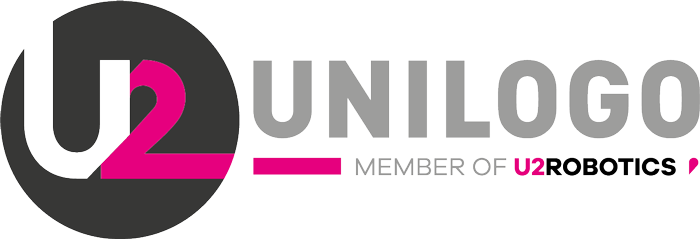SMED is one of the most widely used Lean Manufacturing tools . By implementing SMED, you can significantly reduce machine changeover time. What exactly is SMED? What are the stages involved? What are the advantages of implementing SMED?
Table of contents:
SMED methodology – what is it and what is it used for?
The SMED methodology is the collection of tools and techniques used to reduce the changeover time of machine and equipment in the manufacturing process. The tool was developed by the Japanese engineer Shigeo Shingo. It was invented to reduce the changeover time of stamping presses, but its success has led to many companies implementing SMED tools in their industry. The SMED methodology is proving its worth in the cosmetic, chemical and food industries, where modern machines like Unilogo’s Futureproof are used.
The main goal of implementing the SMED method is to significantly shorten and simplify the procedures involved in machine changeover. As the name “Single Minutes Exchange of Die” suggests, when this method is used, the changeover of a single machine will take just a few minutes. The SMED method recommends a time of 10 minutes, but many changeover processes can be completed in less time.
It is important to note that 10 minutes is only a conventional time. Despite proper SMED implementation, it is not possible to go below this ceiling in many industries. However, SMED examples show that, in all cases, the use of SMED significantly reduces changeover time.
Steps for implementing the SMED Method
When improving machine changeover with the SMED methodology, you should implement the process in four steps. Going through all of the steps makes it easier and more efficient to implement the method.
Step 0 – preparation and analysis of the current changeover process
The first stage of implementing SMED is to carefully observe the current machine changeover process and draw conclusions. Because no changes or process improvements are made in this step, it is also known as step 0. During the analysis, you need to pay close attention to the processes that consume the most time in the current system.
It is worthwhile to record all machine changeover activities with a camera to make the preparation process easier. This will make it simple to create a list of activities included in the entire changeover process, as well as their duration and suggestions for potential improvements.
Step 1 – internal and external changeovers
This stage differentiates between internal and external changeovers. Internal changeovers are any actions that can only be carried out while the machine is turned off. External changeovers can include actions that are done without shutting down the machine. Internal changeovers typically have the highest efficiency losses and take the longest time to complete due to the need to stop the machines.
At this point, it is possible to identify the segments where you can potentially reduce changeover times and eliminate activities that lead to longer processes.
Step 2 – transformation of the changeover process
The goal of this stage is to convert as many internal changeovers as possible to external changeovers. This is expected to result in less machine downtime and, as a result, a faster start of production of the second product type. To that end, clear instructions are used to standardise the changeover procedure, as well as to standardise the assembly parameters and tools.
Step 3 – introducing improvements
Finally, every effort is made to reduce the total time of those internal operations that cannot be converted to external ones. In this step, optimisation is introduced in logistics, organisation and equipment.
This step may include the following activities:
- proper placement and storage of tools, as well as their simplified identification;
- delegating some of the work to an additional operator, allowing selected activities to be carried out simultaneously;
- replacing fixtures with systems that allow rapid assembly, such as using mechanical clamps instead of traditional screws;
Dnhancing and sustaining new implementations
Although the SMED methodology is based on four basic implementation steps, the importance of maintaining and improving changeover techniques cannot be overstated. The effects of the new improvements can be lost if workers are not regularly trained and changeovers are not audited.
When you increase your staff’s knowledge and skills in changing the way changeovers are carried out, and raise their awareness of the need for improvements, you may see more and more suggestions for changes in the changeover process. Audits, on the other hand, allow you to measure the effects of changes that have been implemented as well as to check that all operations are carried out in accordance with instructions.
What are the benefits of using Single Minutes Exchange of Die?
By incorporating SMED into your production, you gain shorter machine changeover times and, as a result, a significant increase in production capacity. You can shorten lead times by eliminating production downtime. Shorter and more frequent changeovers result in shorter product runs, which leads to greater production flexibility, improved product quality and, ultimately, improved company cash flow. By simplifying procedures and shortening changeover times, the process requires less labour, which increases its safety, transparency, and worker comfort.
To summarise, the SMED methodology is a simple and adaptable method for reducing changeover times of a wide range of machines, equipment and even manufacturing processes. Its main benefits are the immediate results and the low financial investment. In many cases, changeover time is reduced by up to 50%, which helps to increase employee motivation. To be successful, improving the changeover process requires commitment and meticulous analysis, however.
If you want to grow your business, modern machines are essential for better efficiency and speed of production. Check out Unilogo’s products if you need a custom solution for your company. You’ll find dedicated machines as well as entire production lines designed to suit your industry. Contact Unilogo experts to assist you in selecting the best technological solutions. To learn more, please complete the brief contact form.


